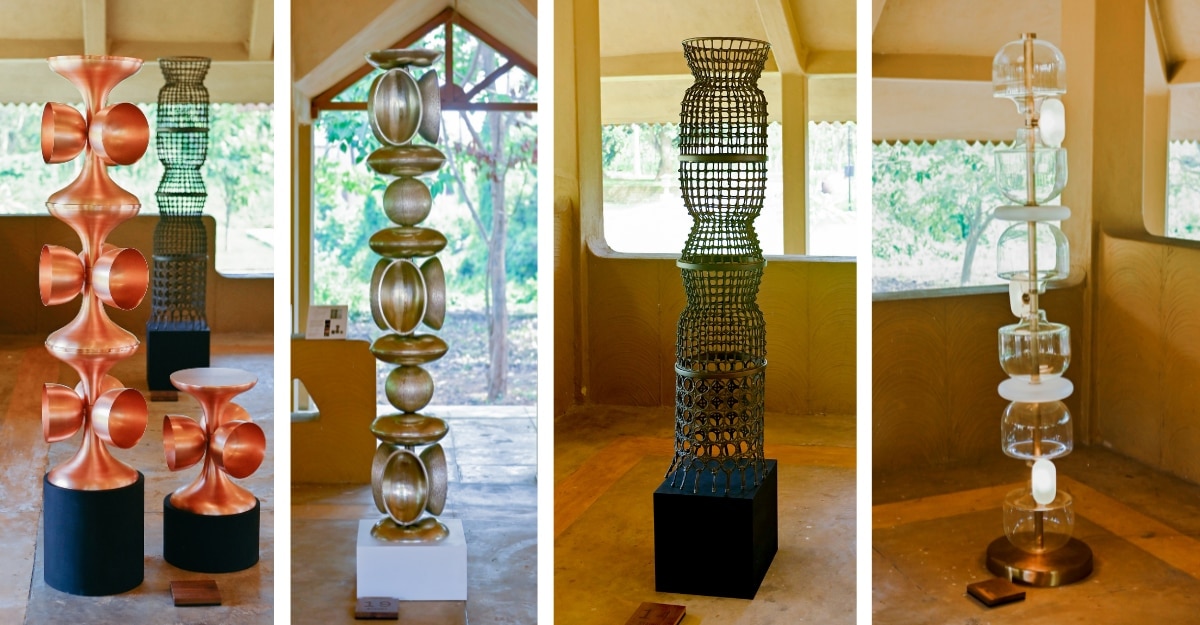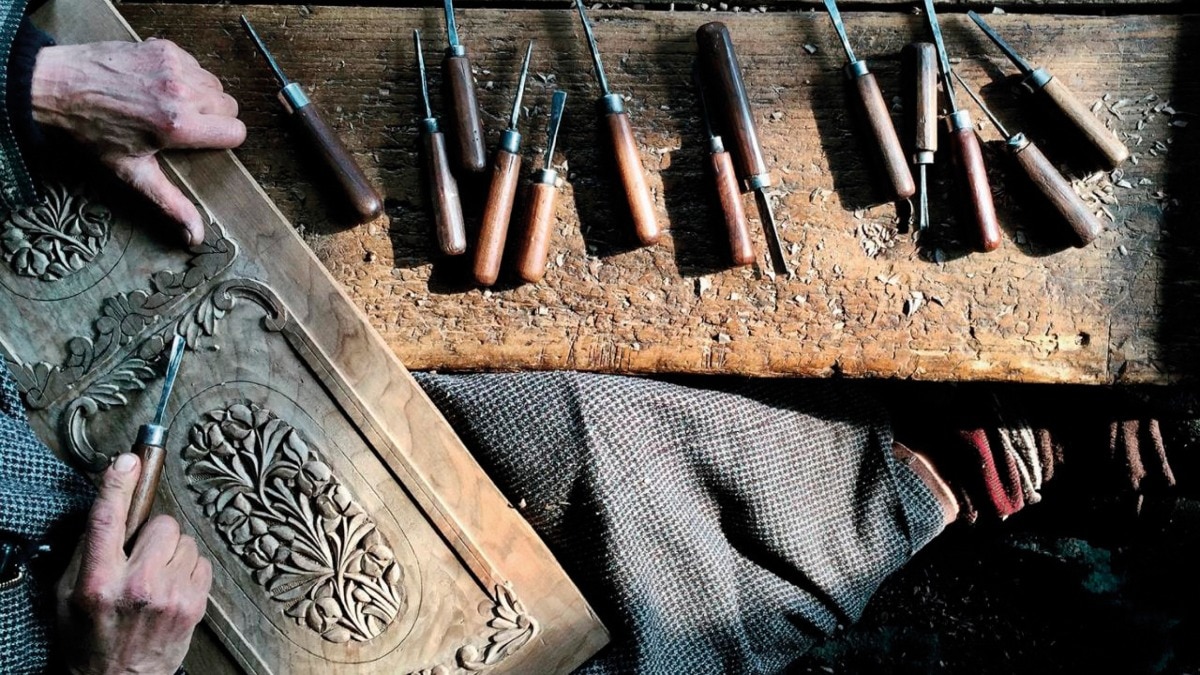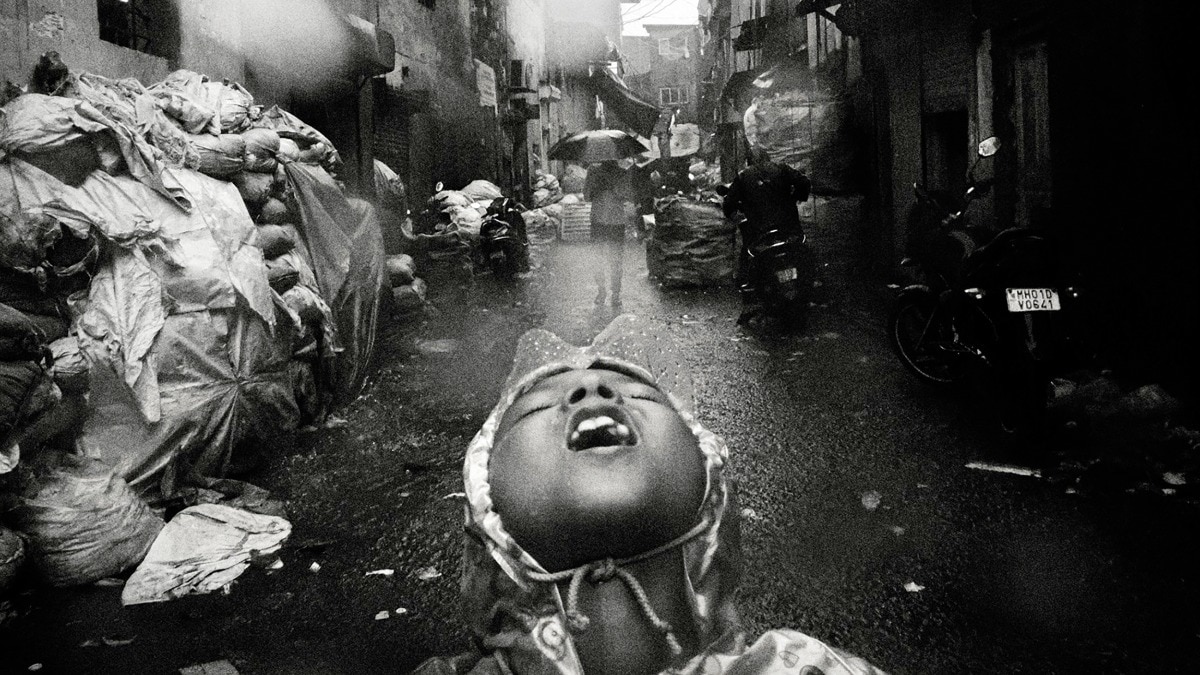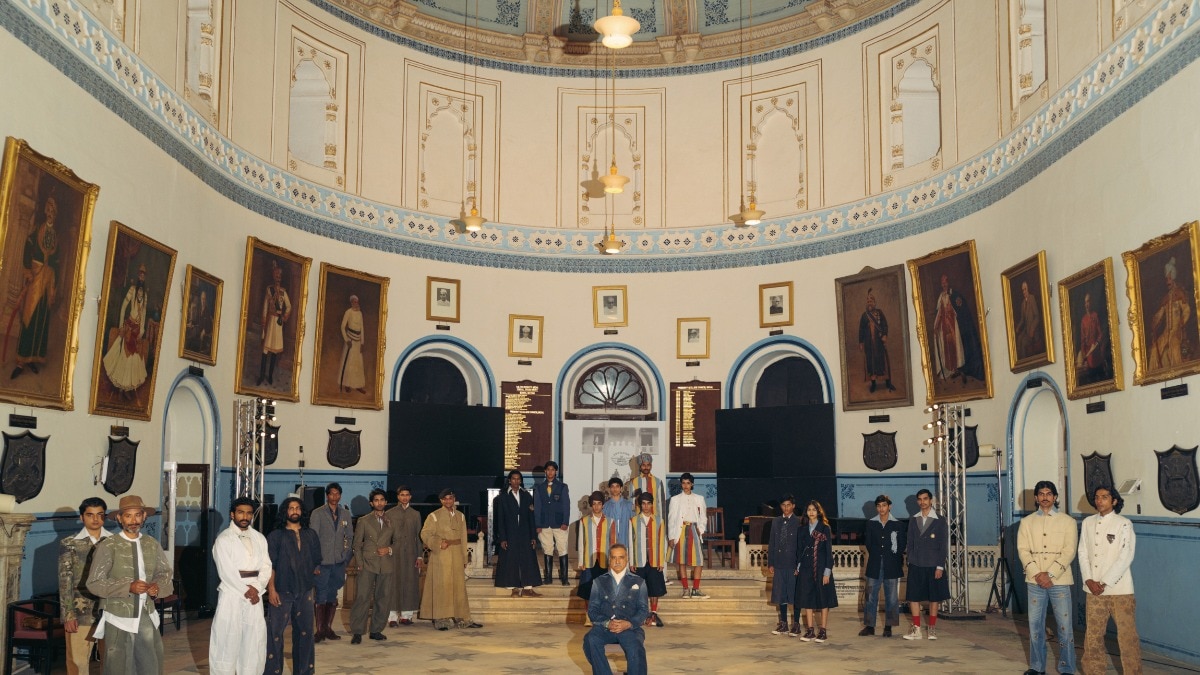How a celebrity architect and interior designer marries form, function, and art in his creations
Ashiesh Shah’s latest exhibit is a step further into his exploration of wabi-sabi and love for Indian craft.


Finding a semblance between art, architecture, and design, architect and interior designer Asheish Shah’s work over the last 20 years has been as extensive as its diverse—from office spaces and penthouses, to concept stores and restaurants. His designs have found their way into the homes of celebrities like Hrithik Roshan, Ranbir Kapoor, Katrina Kaif, Arjun Rampal, Meher Jessia, Abhishek Kapoor, Jacqueline Fernandez, Aditya Roy Kapoor, Cecilia Morelli-Parikh, Hemant Oberoi, and more.
But it isn’t this starry list that intrigues us, or his Parson’s degree, it’s Shah’s practice rooted in the Japanese philosophy of wabi-sabi (an aesthetic concept based on impermanence and imperfections). It is the integration of this philosophy in tribal hallmarks that are immediately Indian, and how they have found their way into his designs, including STAMBH, his recent exhibit for the second G20 meet in Bhubaneshwar.

We speak with him about his latest collection and everything that inspires his designs today.
Harper’s Bazaar: Your core belief in wabi-sabi and the Indian tribal aesthetic have often found a way into your designs. Tell us a little about the genesis of these in your work.
Ashiesh Shah: As a designer, I believe we are naturally drawn to certain elements that resonate with us on a personal level. This connection forms the starting point of our creative journey. My affinity for the Japanese philosophy of wabi-sabi in my designs stems from a deep connection to a particular aesthetic. I am mindful of what my eye is naturally drawn to and what captures my attention. I don't take these preferences for granted; instead, I carefully observe and analyze them. It is through this process of self-reflection and curation that I have developed a strong affinity for the philosophy of wabi-sabi.
Over time, this aesthetic has become an integral part of my design practice. It influences my creative decisions, guiding me to embrace simplicity, imperfection, and the beauty of natural materials. The tribal hallmarks inspire me with their raw and unapologetic design philosophy, while the wabi-sabi philosophy resonates with my appreciation for the imperfect, transient, and authentic aspects of life.
HB: Would these also be markers in your latest exhibit, STAMBH? And how?
AS: Certainly! The stambhs featured in my latest exhibit are a culmination of my decade-long journey with crafts, as well as my passion for drawing and sculpting that I have honed since my childhood. By merging these creative pursuits, I have crafted unique sculptures that also serve as design objects, representing an aesthetic that resonates deeply with my artistic practice. These stambhs are not only markers of my personal artistic journey but also celebrate the cultural heritage of India and its diverse craftsmanship.

HB: You are also deeply rooted in Indian cultural and craft techniques, and have made the kaarigars from around the country a part of your work. Where does this inherent rootedness come from?
AS: My deep connection to Indian culture and its craft techniques stems from my fascination with materiality and the art of handcrafting. Having lived in America for a while, I gained a fresh perspective on the country, which ignited my search for unique and authentic materials. This pursuit led me back to India, where the crafts embody all that I am passionate about—the materiality, the handmade, and the unique.
From the outset, I was drawn to the idea of contemporary design objects fused with traditional crafts. This was a pioneering concept at the time, and although it posed challenges, it always seemed worth pursuing. Through the years, I have met and formed strong relationships with interesting people and craftspersons from across India who have been with me on this journey.
HB: From Longpi, to Meghalaya, Rajasthan, Channapatna, and more, you have tapped into various craft clusters around the country for your work. How did these collaborations come about, and how did they come together to create STAMBH?
AS: At the Atelier, we strongly advocate the localisation of resources through a re-contextualisation of Indian craftsmanship. In the process of developing these pillars, the artisans employed local resources that were readily available, renewable, or recycled. Whether Longpi from Manipur, Channapatna from Karnataka, or even marble from Rajasthan, the processes of creation have been perfected over years of refinement, paired with the inculcation of a higher percentage of natural or locally sourced materials retaining the authenticity of the craft.

I have always respected the idea of non-displacement of crafts and craftspersons from their original habitat. I worked on these pillars with each part being carved out as sculpture and a single unit, then enlarged them in drawings and made a maquette of them in Mumbai with our local metal vendors or wood carvers. Once finalised, we sent the life-size maquettes to the village with the details of the pillar for the artisans to emulate into their craft. We always try to make the process as easy and seamless for the artisans to understand. This is also important for us, so that the pillar has clean lines and a good finish even as we maintain a wabi-sabi approach to the craft.
Having said that, a lot of the pillars were created in a way that the components were handmade in the village and were then assembled by our metal or wood workers. For instance, the Channapatna beads would be sent to our studio from Channapatna in Karnataka and then would be set as a pillar here in Mumbai.

In some cases, we enhance the traditional craft. For instance, when we worked with the Longpi artisans in Manipur, who created works of black pottery, we realised that the maximum they could take the craft was ten to eleven inches. We wanted to go up to thirty inches. That was finally managed through interactions with the potters, by understanding the traditional processes, the kiln, the temperature and other aspects. We were thus able to evolve the craft to a different scale.
HB: What was the thought behind Indian stambhs for the G20 meet? How did it come about?
AS: The idea for STAMBH came about through the Atelier’s ongoing exploration of indigenous living craft practices. Stambhs are a unique segment of the Atelier that marks the evolution of our country, directly associated with the evolution of our cultural spirit through the arts, craft and design. It is a compilation of the journey that brings different craft villages together with a common symbol. Celebrating the philosophies of geometry, sustainability, and empowerment, the presentation is simply a composition of inventiveness, tapped by artists, coming together to narrate tales of evolving aesthetics and craftsmanship.
HB: Would you say STAMBH is an extension of your lingam exhibit, or is it what paved the path for the thought?
AS: The stambhs are not merely an extension of any specific exhibit or practice, but rather an amalgamation of multiple forms and influences from my sculptural craft journey. Indian Mythology, Indian form, and tribal geometry have greatly inspired me. I believe in the ruthless tribal philosophy of design and want to bring that part of Indian culture into my practice.
Within my practice, you will find a rich tapestry of sculptures, each with its own story and character. From the minimalistic elegance of a Channapatna bead to the intricate layers of the Sholapith rice paper lamp, every piece embodies my artistic style while celebrating the diversity and versatility of my practice. STAMBH is an embodiment of my artistic ethos—a manifestation of my constant quest for innovative forms, materials, and techniques.

HB: How do you think these fit into the sustainability theme of G20?
AS: In addition to celebrating craftsmanship, STAMBH also engages with the concept of circular economies, emphasizing responsible practices that minimise waste and maximise resources. By designing objects that employ craft techniques, materials, and processes rooted in the region, the exhibition empowers artisans while promoting ecologically responsible resource management and production practices. This approach leads to greater involvement of families and communities, generating employment opportunities, and economic growth. STAMBH aims to inspire meaningful reflection and dialogue on sustainability and cultural preservation, fostering a deeper appreciation for how traditional craft and innovation can create a more equitable and sustainable future.

HB: Speaking of sustainability, we have to ask for some of the favourite sustainable architecture designs or methods, anything that people can do at home as a step closer towards sustainable living.
AS: In terms of sustainable architecture designs, the Jaisalmer School by Dyana Kellogg stands out as a good example. It showcases the use of local stone, creating a strong and minimalistic form that embodies sustainability and blends seamlessly with its surroundings.
As for steps towards sustainable living at home, there are several approaches. Opting for energy-efficient appliances, implementing proper insulation, and conserving water through low-flow fixtures and rainwater harvesting can make a significant impact. Additionally, practicing effective waste management by recycling and composting, choosing sustainable transportation options, and creating green spaces contribute to a more sustainable lifestyle. These small yet impactful choices collectively pave the way for a greener future.
The exhibition ‘Sustain: The Craft Idiom’ is a specially curated cultural project for the 2nd G20 CWG meeting in Bhubaneswar, Odisha, by the Ministry of Culture, Government of India. The theme of the exhibition is predicated on and reflective of the second priority of the Culture Working Group (CWG)—‘Harnessing Living Heritage for a Sustainable Future.’ The exhibition is being held at Kala Bhoomi - Odisha Crafts Museum from the 16-22 May 2023. ‘ Sustain: The Craft Idiom’ is composed of three constituent experiences—Stambh, Akshara and demonstrations by master artisans and teachers.










